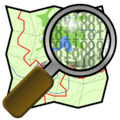Designing a better world - Architecture For Humanity

With my recent blogs about digital worlds, I wanted to take some time to promote those people that are making a difference in our real one. Founded by Kate Stohr and Cameron Sinclair , Architecture For Humanity ( AFH ) is a non-profit charitable organization that seeks architectural solutions to humanitarian crisis and brings design services to communities in need. Cameron's outreach can be seen everywhere i ncluding interviews on CNN, TED , Sundance Channel (with Cameron Diaz ) and h is book Design Like You Give A Damn is a great read I highly recommend. Today seemed a great day to blog about this proactive organization as it is the launch week of their 2009 Open Architecture Challenge : Design the Classroom of the Future. We believe that where resources and expertise are scarce, innovative, sustainable and collaborative design can make a difference. By tapping a network of professionals willing to lend their time and their talents to helping those who would not otherwise...


